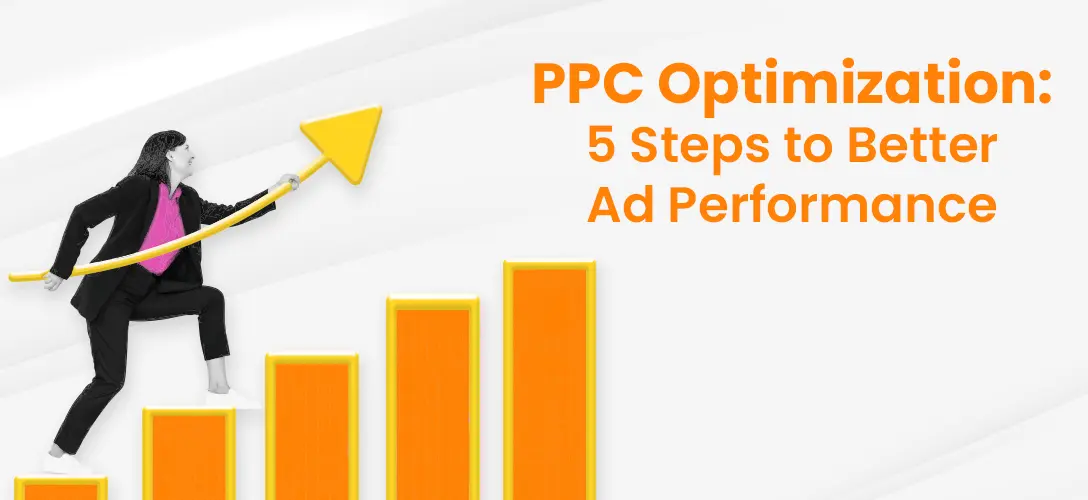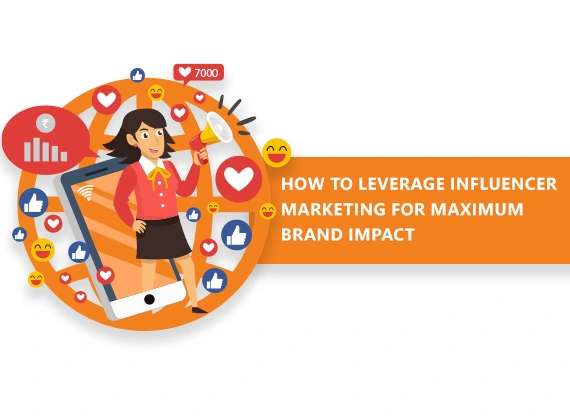Introduction
Pay-per-click (PPC) advertising has become one of the most powerful tools for businesses to increase their
online visibility, drive traffic, and boost conversions. However, just launching a PPC campaign isn’t enough.
To ensure that your campaigns provide the best possible return on investment (ROI), you need to constantly
optimize them. Effective PPC optimization is the key to improving ad performance, driving relevant traffic,
and lowering your cost-per-click (CPC).
In this blog, we will discuss the essential steps for optimizing your PPC campaigns to achieve better ad
performance and ensure you’re getting the most out of your marketing budget. Whether you’re new to PPC or
looking to refine your existing campaigns, these five steps will help you master PPC optimization.
Start with the Right Keywords
The first and most important step in PPC optimization is selecting the right keywords. Keywords are the
foundation of any PPC campaign, and choosing the wrong ones can result in wasted ad spend and poor performance.
To make sure your campaigns are successful, focus on keywords that align closely with user intent and your business goals.
Thorough keyword research should be your starting point. Use tools like Google Keyword Planner, SEMrush, or
Ahrefs to discover high-performing keywords in your industry. You should also consider using long-tail
keywords—these are more specific, less competitive, and often lead to higher conversion rates. Negative
keywords are equally important; they help exclude irrelevant search queries and ensure your ads are shown
to a more targeted audience.
If you want to take things further, AI-optimized PPC campaigns can play a crucial role in identifying
the right keywords based on machine learning and predictive analytics. AI can help analyze user behavior
patterns and optimize keyword targeting for better results.
Craft Compelling Ad Copy
Once your keywords are in place, it’s time to focus on creating compelling ad copy. Even with the best
keywords, your ads won’t perform well unless the copy is engaging and encourages users to click. PPC ad
performance depends largely on the creativity and clarity of your message.
When crafting your ad copy, make sure to highlight your unique selling points (USPs). What sets your
product or service apart from competitors? Be sure to include a clear call to action
(CTA), such as "Shop Now," "Get a Free Quote," or "Learn More," which prompts users to take immediate action.
Remember to A/B test your ad copy regularly. Testing different headlines, descriptions, and CTAs will help
you understand what resonates most with your audience. Even small changes can have a significant impact on
performance, so continually experimenting with your ads will keep you ahead of the competition.
Optimize Your Landing Pages
A great ad will get users to click, but if your landing page isn’t optimized for conversions, all that
traffic will be wasted. PPC campaigns are only as effective as the landing pages they direct traffic to.
If users land on a page that’s irrelevant or difficult to navigate, they’re likely to leave quickly.
To improve PPC performance, make sure your landing pages align closely with your ad’s message. For example,
if your ad promotes a specific product, your landing page should focus on that product and its features, not
take users to a generic homepage. A relevant and well-structured landing page increases the likelihood of conversion.
Ensure that your landing pages are mobile-optimized, as more users are browsing and shopping via mobile devices.
Also, keep your design simple and your CTA clear. The goal is to make it as easy as possible for users to complete
the desired action, whether it’s making a purchase, signing up for a newsletter, or filling out a form.
Use Advanced Targeting Options
One of the greatest advantages of PPC optimization is the ability to target your ads to the most relevant
audience. With advanced targeting options, you can ensure that your ads are only shown to people who are
likely to be interested in your products or services. This means you’ll get more qualified clicks
and reduce wasted ad spend.
PPC platforms like Google Ads and Bing Ads offer a variety of targeting options. You can target by location,
demographics, device, and even time of day. By analyzing historical data, you can adjust your targeting to
show ads when your audience is most likely to engage. For example, if your business is location-based, use
geotargeting to reach people in a specific geographic area.
In addition to these standard targeting features, AI-optimized PPC campaigns are becoming more common,
allowing for even more precision. AI can automatically optimize targeting based on data such as user behavior,
preferences, and past interactions. This reduces the need for manual adjustments and helps improve your targeting efficiency.
Monitor, Analyze, and Adjust Regularly
PPC optimization is an ongoing process. To continuously improve your PPC ad performance, you must constantly
monitor, analyze, and make adjustments based on the data you collect. This allows you to refine your campaigns
and ensure that you are always optimizing for the best possible results.
Use the analytics tools available on your PPC platform to track key performance indicators (KPIs) such as
click-through rate (CTR), conversion rate, cost per acquisition (CPA), and return on ad spend (ROAS). Regularly
reviewing these metrics will help you identify which ads, keywords, or targeting strategies are working and which
ones need adjustments.
For example, if you notice that certain keywords are driving high-quality traffic, you can increase their bids
or allocate more budget to them. Conversely, if some keywords aren’t performing as well, you can reduce their
budget or pause them altogether. Continuous analysis and optimization are crucial to ensuring that your PPC
campaigns stay efficient and cost-effective.

